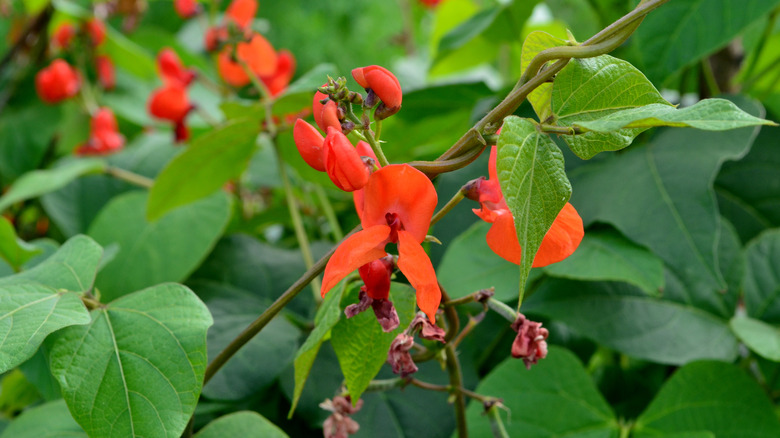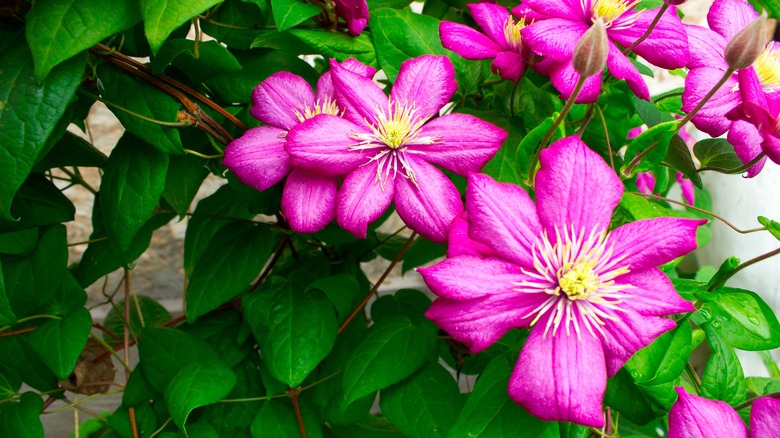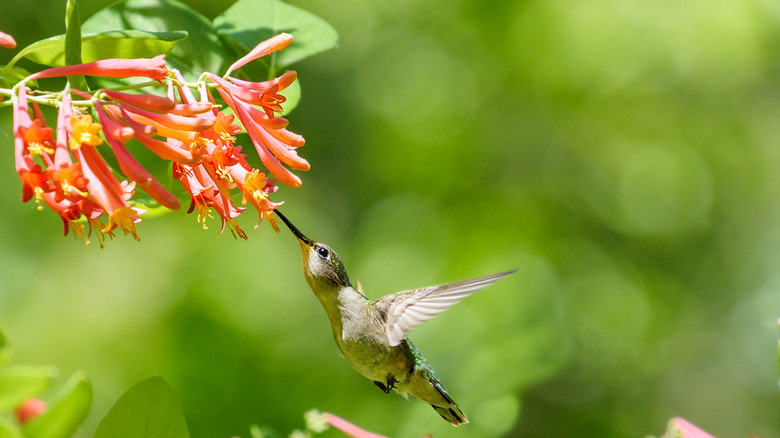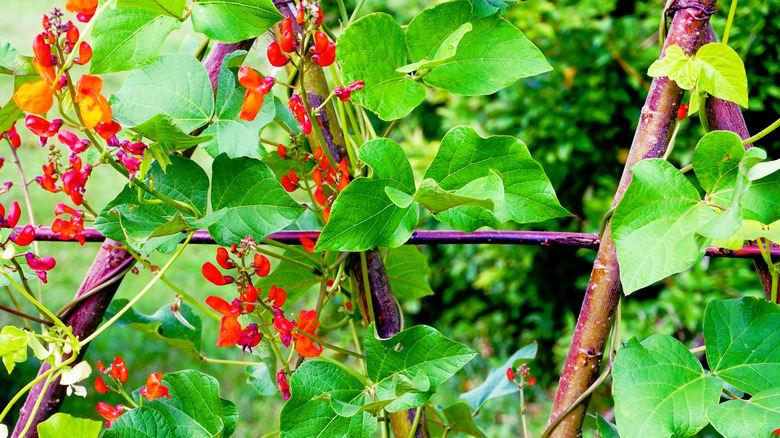3 Best Climbing Plants That Are Easy To Grow Without Taking Over Your Walls
Climbing plants add vertical interest to your landscaping, along with many other benefits. Vines can offer privacy and shade while providing nectar for bees, butterflies, and hummingbirds. However, avoid invasives when you consider adding climbing plants to your space. These florae are not only bad for the ecosystem, according to the U.S. Forest Service, but can also damage your home's exterior.
Some plants, including ivy, have spike-like suckers that hold moisture, per Never Paint Again. Unfortunately, over time, those suckers weaken the exterior of your house, requiring major renovations. Thankfully, there are many beautiful options that you can grow on trellises near your home's exterior, providing the look of a dreamy color-covered wall without doing any damage.
According to Ambius, vines and binds are the two primary types of climbing plants. Vines cling to supports by using thorns, pads, or tendrils, while binds use their winding stems to climb. You can grow either type of climber on a trellis to add a stunning addition to your landscape.
1. Clematis
Clematis (Clematis spp.) comes in a wide variety of colors and shapes, so there is almost certainly a variety to match your space. According to Longfield Gardens, this beautiful climber is hardy in zones 4 through 9, so it is a long-lived perennial in much of the United States. Because clematis is a binding type of climbing plant, it uses its stem to wind around almost any structure. This flora is perfect for trellises, arbors, and even fences. Because clematis is available in color varieties from white to dark purple, with or without stripes, and in broadleaf or bell shapes, you can mix and match varieties on a single trellis for even more of a visual impact.
Breezy Hill Nursery considers clematis a low-maintenance plant. Although they require little maintenance, they do not like to be transplanted, so it is important to select the right spot for them before planting. Choose a location in full sun to get the most blooms and amend the soil if necessary to ensure it has good drainage — clematis vines do not like soggy roots. During the growing season, feed monthly using a 10-10-10 fertilizer, according to WhyFarmIt.
2. Coral honeysuckle
The smell of honeysuckle in the summer is intoxicating, but if you want to add this plant to your landscape, it is vital to get the right type. Japanese honeysuckle (Lonicera japonica), which is often found along roadsides and in fields, is an invasive vine that chokes out native plant species, according to the Invasive Plant Species Assessment Working Group. Thankfully, there is an even more beautiful honeysuckle option that is native and beneficial to the ecosystem.
The Ladybird Johnson Wildflower Center states that coral honeysuckle (Lonicera sempervirens) is a semi-evergreen, woody vine native to North America. This plant is hardy in zones 4 through 11, offering many benefits to wildlife. Hummingbirds and bees are attracted to the red or yellow trumpet-shaped blooms, while birds enjoy the berries throughout the winter.
Coral honeysuckle is exceptionally low-maintenance. Since it is a native plant, it tolerates most soils and some shade, although you will get more blooms in a full-sun environment. This stunning plant can grow vines up to 20 feet long, but you can simply prune it back as needed in the fall to control growth.
3. Scarlet runner beans
Scarlett runner beans (Phaseolus coccineus) are a favorite among home gardeners because they provide edible seed pods in addition to their beautiful red blooms. This annual plant is part of the legume family and uses tendrils to climb. Because it only lasts one season, it grows quickly — you can expect to see blooms around 90 days after planting. Even the bright green foliage is full and gorgeous. According to Wisconsin Horticulture, this vine is also a favorite of hummingbirds and bees.
Plant scarlet runner beans from seed when the last chance of frost has passed. You can speed germination by soaking the large seeds in water overnight before planting. Next, select a location in full sun and provide a structure for climbing. Many gardeners like to grow this vine up a bamboo trellis, but scarlet runner beans will climb up almost any kind of structure. Just make sure you give these vines plenty of room to grow since they can reach up to 15 feet long in warmer climates.



